Differences between v3 QS and QC catalogs and their v2 counterparts
-
 by
JeanTate
by
JeanTate
In today's ZG blog entry Quench Boost: A How-To-Guide, Part 3, Laura notes these changes:
Before I launch into Part 3 of the Guide, here are the recent updates:
-
The classification results for the 57 control galaxies that needed replacements have been uploaded into Quench Tools. -
We’ve applied two sets of corrections to the galaxies magnitudes: the magnitudes are now corrected for both the effect of extinction by dust and the redshifting of light (specifically, the k-correction). -
We’ve uploaded the emission line characteristics for all the control galaxies. -
We’ve uploaded a few additional properties for all the galaxies (e.g., luminosity distances and star formation rates). -
We corrected a bug in the code that mistakenly skipped galaxies identified as ‘smooth with off-center bright clumps’.
All 26 QC-QC duplicates, and the QC object in all 29 QS-QC duplicates are not in v3 of the QC catalog, as judged by their AGS Ids. All 29 QS objects in the 29 QS-QC duplicates are in v3 of the QS catalog. Both QS-QS duplicates - AGS00000j6 and AGS0000080 - are in v3 of the QS catalog.
One other object, in v2 of the QC catalog, is not in v3: AGS00002ds This is the object identified in the Bad spectrum: clearly not a z=0.327 galaxy! thread.
57 objects are in v3 but not v2; this brings the total of QC objects to 3003, one more than the 3002 objects in QS v3. There are no changes to the number of objects in QS, or the AGS Ids.
The 57 new objects have AGS Ids as follows:
AGS00004mt
AGS00004mu
AGS00004mv
AGS00004mw
AGS00004mx
AGS00004my
AGS00004mz
AGS00004n0
AGS00004n1
AGS00004n2
AGS00004n3
AGS00004n4
AGS00004n5
AGS00004n6
AGS00004n7
AGS00004n8
AGS00004n9
AGS00004na
AGS00004nb
AGS00004nc
AGS00004nd
AGS00004ne
AGS00004nf
AGS00004ng
AGS00004nh
AGS00004ni
AGS00004nj
AGS00004nk
AGS00004nl
AGS00004nm
AGS00004nn
AGS00004no
AGS00004np
AGS00004nq
AGS00004nr
AGS00004ns
AGS00004nt
AGS00004nu
AGS00004nv
AGS00004nw
AGS00004nx
AGS00004ny
AGS00004nz
AGS00004o0
AGS00004o1
AGS00004o2
AGS00004o3
AGS00004o4
AGS00004o5
AGS00004o6
AGS00004o7
AGS00004o8
AGS00004o9
AGS00004oa
AGS00004ob
AGS00004oc
AGS00004odOne other change - between v2 and v3 - is that in v3 the sdss_ids have had their last two digits changed to '00' (perhaps because when the data was prepared this field was kept as 'standard' rather than 'text'). For example, the sdss_id associated with AGS0000001 is 587725074458345628 in v2, but 587725074458345600 in v3. {UPDATE: see below}
As I find other changes, I'll note them in this thread. Perhaps others could do the same?
UPDATE: the changes to sdss_id are not that simple. For example, 587725074458804439 -> 587725074458804500; 587728307486589067 -> 587728307486589000.
Posted
-
-
 by
JeanTate
by
JeanTate
AGS00004n1 - a new QC object - has the same (RA, Dec) as AGS00004cy, an original QC object. In this sense it's like the QC-QC duplicates. However while it may differ from those QC-QC duplicates in some ways (I haven't checked yet), what's important is the extent to which data from one DR7 photometric object has been mixed up with that from another (stay tuned).
Posted
-
 by
JeanTate
in response to JeanTate's comment.
by
JeanTate
in response to JeanTate's comment.
Oh dear! 😦
In QC (v3) - shorthand for version 3 of the QC catalog - AGS00004n1 has (RA, Dec) = (244.3578, 29.915545), which are the same values for AGS00004cy in QC (v3). The log_mass, petro_r50, and redshift values are also the same. sdss_id is 587732591182020753 (4n1, shorthand for AGS00004n1) and 587732591182020700 (4cy).
However, the (u, g, r, i, z) values are different: (20.113, 18.7361, 17.7756, 17.3462, 17.1733) for 4n1, and (18.3748, 17.1958, 16.5891, 16.35, 16.2649) for 4cy.
In Examine, 4cy's (RA, Dec) is (197.40622, 59.628479), and 4n1's (244.3578, 29.915545).
In QC (v2), there is no AGS00004n1 (it is added in v3), but there is AGS00004cy. For 4cy(2) - shorthand for "AGS00004cy in QC (v2)" - (RA, Dec) is (197.40622, 59.628479); (u, g, r, i, z) values are: (20.113, 18.7361, 17.7756, 17.3462, 17.1733) (the same as they are for 4n1); sdss_id is 587732591182020753; petro_r50 is 2.38314, which is the same as 4cy(3) and 4n1; the log_mass and redshift values are different.
In DR7, 587732591182020753's:
- (RA, Dec) = (197.40622, 59.628479) - same as 4cy(2)
- redshift is 0.19875558 - ditto
- the (u, g, r, i, z) values are: (20.113, 18.7361, 17.7756, 17.3462,
17.1733) - same as cy4(2),cy4(3),and 4n1 - petro_r50 is 2.38314 - ditto
- (I can't check log_mass)
What DR7 object is at (or near) (244.3578, 29.915545)?
587735744228426025 ... which has (u, g, r, i, z) values of
(20.113, 18.7361, 17.7756, 17.3462, 17.1733)(20.006464, 18.408495, 17.31353, 16.838385, 16.44705); petro_r50 2.231251, and redshift 0.14813963.This is - it seems to me - bad, very very bad. 😦 😦 At the least it seems the photometry (colors, petro_r50) for one object got swapped with the spectroscopy (redshift, maybe log_mass too?) for another.
I wonder what other QC (v2) - QC (v3) pairs are similarly mixed up? And does this kind of mix-up occur in QS (v2) vs QS (v3)? What about the morphology classifications (both QS and QC)?
UPDATE: I have edited my post, to correct some errors. Laura wrote, in a post later in this thread:
- We need to remove AGS00004n1. It's a mistake for that object to be in there twice. That's a mistake in my code that replaced the 'bad' controls with the new 'good' controls. I have that object in there twice.
The entry for AGS00004cy in QC (v3) contains errors; specifically, the (RA, Dec) are wrong, as is the redshift. If the log_mass value in for this object, in v2, is correct, then it is wrong in v3. As the (u, g, r, i, z) values in v3 are deredened and k-corrected, I cannot tell - right now - whether the AGS00004cy v3 values are correct or not.
Posted
-
 by
JeanTate
in response to JeanTate's comment.
by
JeanTate
in response to JeanTate's comment.
Well, there's good news - sorta - and bad news.
First, the good: the v2 and v3 QC catalogs have the same values for ra, dec, log_mass, petro_r50, and redshift, for all pairs of AGS Id objects1, except for AGS00004cy. I did not check all the classification fields, but for 'merging', and 'symmetrical', there are no other differences. For 'smooth' there is one difference: AGS00003bp is 'Smooth' in the v2 catalog, but 'Features or disk' in the v3 one. For 'how_round', there is a universal replacement of 'Cigar shaped' with 'Cigar sahped'. 😉
The 'clumps' field is fully populated in v3 (except, of course, for 'Star or artifact' classifications), as Laura indicated.
There is an interesting change in the 'central_bulge' field: if 'disk-edge' is 'Yes', there is always a value - 'Yes' or 'No' - in the 'central_bulge' field in v2. However, in v3 this is no longer universally true. For example, AGS00002bf is 'Yes' (the bulge is central) in v2, but blank in v3; AGS00002br is 'No' (the bulge is not central) in v2, but blank in v3; AGS00002c5 is 'Yes' in both v2 and v3; AGS00002p7 is 'No' in both v2 and v3.
Now for the bad - really, really bad - news: the values in each of the u, g, r, i, and z fields are different ... in every single pair! 😦
I did some spot checking: the v2 values for (u, g, r, i, z) match the DR7 ones for the (v2) sdss_id.
1 For the 2945 with the same AGS Ids.
Posted
-
 by
trouille
scientist, moderator, admin
by
trouille
scientist, moderator, admin
Hello,
JT wrote: "Now for the bad - really, really bad - news: the values in each of the u, g, r, i, and z fields are different ... in every single pair!"
No, this is very very good news! My short blog post didn't make this clear, and so I'm really glad you've posted this.
All the apparent magnitudes (u-mag, g-mag, r-mag, i-mag, z-mag) for both the control and the post-quenched samples have been redshift-corrected (k-corrected) and corrected for extinction by dust. So they'll be slightly different from their original values that were imported into Tools. By correcting for these two factors, we can now compare apples to apples rather than apples to dust-covered, fast-moving apples.
Posted
-
 by
trouille
scientist, moderator, admin
by
trouille
scientist, moderator, admin
Jean, this is so helpful. Thank you for taking the time to do this.
Mistakes that I've emailed Ed (the Tools programmer) to fix:
-
The SDSS IDs being changed so that the last two numbers are '00'. I'm guessing this happened in the process of inputting the new values into Tools. This should be easy to fix since the files the import is based on have the full SDSS IDs.
-
We need to remove AGS00004n1. It's a mistake for that object to be in there twice. That's a mistake in my code that replaced the 'bad' controls with the new 'good' controls. I have that object in there twice.
-
Definitely we want our cigars to be correctly 'shaped'. We'll fix that 😃
I'm not quite sure what's going on with your question about 'central-bulge' responses. I'll check with Kyle on that.
Again, SO HELPFUL to find these issues. If others see others, please let us know. And check out http://quenchtalk.galaxyzoo.org/#/boards/BGS0000001/discussions/DGS00001zw for a bit of conversation about errors that crop up while doing science. The gist is -- it's all part of the process! And thankfully we have people like JT on our team who are making sure errors are caught early. Thank you!
Posted
-
-
 by
JeanTate
in response to trouille's comment.
by
JeanTate
in response to trouille's comment.
Oops!
You're right, I did mis-read that ... I read "We’ve applied two sets of corrections to the galaxies magnitudes ..." together with "We’ve uploaded a few additional properties for all the galaxies ...", and concluded that the new fields "x_absmag" (where x is u, g, r, i, z) are the ones produced with the corrections. In addition, the
twoerrant v3 objects-AGS00004cy andAGS00004n1 -both havehas DR7 modelmags(for two different objects), not deredened and k-corrected ones {also, see UPDATE below}.Anyway, the v3 (u, g, r, i, z) mags should be brighter than the corresponding v2 ones, right? Well, there are a few which aren't.
For example, AGS000034r; v2 is (u, g, r, i, z) = (17.8055, 14.8112, 14.2844, 14.1306, 16.9467), and v3 (31.0623, 14.0895, 13.5735, 13.6687, 29.7521). Clearly, the deredened, k-corrected u and z mags are (wildly) wrong! 😮
Others with negative u-band differences (i.e. v3 fainter than v2) are: AGS00002qp, AGS00002pk, AGS00004ir (ditto z-band), AGS00003y9 (ditto), AGS00003a2, AGS000047b, AGS000041g, AGS00003ox, AGS0000494, AGS00002va, AGS00003ky, AGS00004l3, AGS00002r0, and AGS00003ri.
In addition to the three already mentioned, the following also have fainter v3 z-band mags than their v2 counterparts: AGS00003gw, AGS00004fy, AGS00002kv, AGS00004fx, AGS00003ze, AGS00002we, and AGS00003xb.
UPDATE: I have edited my post to correct an error. AGS00004cy's (u, g, r, i, z) magnitudes are unique: no other object in either the QS or QC catalog, in either v2 or v3 has these; nor does DR7 ObjId 587735744228426025.
Posted
-
 by
JeanTate
by
JeanTate
I've just checked the v3 QS catalog, against the v2 one (except for three of the classification fields1).
As expected, v3 vs v2 fields with numeric values changed as outlined in the GZ blog post: the (u, g, r, i, z) mags are different (I haven't yet checked for seemingly nonsense changes), the fluxes are the same, as are log_mass, redshift, and petro_r50. _flux_err fields all changed - v3 contains the DR7 flux_err values, not copied of the _flux ones - EXCEPT for nad_abs_flux_err (the values here are the same as in v2, i.e. copies of nad_abs_flux values).
In the 'category' fields, i.e. classifications, there are some surprising changes1; in all, 11 objects had at least one change.
Six of the objects with changed classifications are QS-QC duplicates: AGS00000kg, AGS000013g, AGS00001k6, AGS00001k4, AGS000020j, and AGS00001dp. I have yet to check how these changes might be relevant to the analysis in the Duplicates: independent test of the robustness of our classifications. thread.
The five others are:
- AGS00000qx: arm_tightness went from 'Medium' (v2) to 'Loose'
- AGS00000di: symmetrical went from 'Yes' to 'No'
- AGS00001ig: went from cigar-shaped smooth (v2) to edge-on disk (v3)
- AGS00000pd: from in-between smooth (v2) to no bar/no spiral disk/obvious bulge (v3)
- AGS000018s: ditto (from in-between smooth to no bar/no spiral disk/obvious bulge).
1 not counting the three fields which I have not yet looked at, how_round (I suspect all changes will be 'Cigar shaped' -> 'Cigar sahped' 😉), central_bulge, and clumps.
Posted
-
 by
trouille
scientist, moderator, admin
by
trouille
scientist, moderator, admin
Jean, finding these anomalous sources is really helpful. I can then go and see if it's their extinction correction value or the k-correction value that gone wrong.
Its useful to see the difference between v2 and v3 for each of these anomalous sources, like you did for AGS000034r. Do you think you could provide those values for the other sources that you've listed as well?
Thank you!
Posted
-
 by
JeanTate
in response to trouille's comment.
by
JeanTate
in response to trouille's comment.
Sure thing. And I'll report on some that seem anomalous in the other direction too. As well as the QS v2 vs v3 comparison. But that'll likely be tomorrow.
Note: I edited a few of my earlier posts in this thread, via "UPDATE" in them.
Posted
-
 by
JeanTate
in response to trouille's comment.
by
JeanTate
in response to trouille's comment.
Before a detailed list, a request: Laura, could you please provide the source - algorithm, dataset, paper(s), etc - for the deredening and k-correction1 you used?
I think it's likely you used the deredened mags DR7 itself provides, which are based on the classic Schlegel et al. (1968). However - as far as I know - there are several k-correction codes, presumably each with its own strengths and weaknesses. Which did you use, and why?
Here is the list, for the QC objects with negative u-band values (i.e. where the deredened, k-corrected magnitudes are fainter - sometimes by > 5 mags!). The format is: uid, (u, g, r, i, z) in v2, (u, g, r, i, z) in v3. Starting with a repeat of the first object.
AGS000034r, (17.8055, 14.8112, 14.2844, 14.1306, 16.9467), -> (31.0623, 14.0895, 13.5735, 13.6687, 29.7521)
AGS00002qp, (16.3456, 14.1761, 13.4438, 13.0748, 12.8065) -> (27.9959, 13.3304, 12.6422, 12.71, 12.7892)
AGS00002pk, (20.1555, 17.6801, 16.7974, 16.2838, 15.9427) -> 27.0648, 16.4795, 15.7895, 15.5159, 15.3864)
AGS00004ir, (19.2728, 17.732, 17.0097, 16.5811, 16.4529) -> (24.4526, 16.4021, 15.7814, 15.7128, 17.1431)
AGS00003y9, (21.5777, 19.3358, 18.8414, 18.6275, 18.334) -> (25.5098, 18.2001, 17.7852, 17.9358, 18.4153)
AGS00003a2, (22.3043, 19.7808, 18.1888, 17.6086, 17.2303) -> (26.0619, 17.5176, 16.77, 16.3794, 16.0865)
AGS000047b, (19.9773, 18.285, 17.318, 16.9236, 16.6526) -> (22.8989, 17.0771, 16.4108, 16.3748, 16.0456)
AGS000041g, (23.0283, 17.1528, 16.6594, 16.4056, 16.197) -> (25.823, 16.2622, 15.7532, 15.5541, 15.3129)
AGS00003ox, (21.5485, 18.9815, 17.7449, 17.2781, 16.9441) -> (24.2218, 17.2678, 16.5137, 16.1545, 15.8615)
AGS0000494, (20.6233, 18.526, 17.4178, 16.9413, 16.5486) -> (21.6385, 17.1363, 16.3844, 16.0652, 15.7268)
AGS00002va, (21.6852, 19.3106, 17.932, 17.3283, 16.9083) -> (22.5173, 17.3889, 16.6694, 16.3194, 16.0903)
AGS00003ky, (19.7792, 17.3977, 16.315, 15.843, 15.449) -> (20.5384, 16.2876, 15.2874, 14.84, 14.5067)
AGS00004l3, (21.5172, 19.8064, 18.5224, 18.0085, 17.6477) -> (21.7765, 17.7856, 17.068, 16.7665,16.4826)
AGS00002r0, (24.3797, 20.2079, 19.0206, 18.5354, 18.184) -> (24.5094, 18.4055, 17.7123, 17.3906, 17.0865)
AGS00003ri, (22.1742, 20.2227, 18.6163, 17.9733, 17.6376) -> (22.2946, 17.7327, 17.0844, 16.6068, 16.5175And here are the ones with negative z-band mags, same format (three are repeated):
AGS000034r, (17.8055, 14.8112, 14.2844, 14.1306, 16.9467) -> (31.0623, 14.0895, 13.5735, 13.6687, 29.7521)
AGS00003gw, (19.5562, 18.0875, 17.672, 17.512, 17.8312) -> (18.3341, 17.0236, 16.4935, 16.5468, 21.5802)
AGS00004fy, (19.4742, 18.0712, 17.3656, 16.9885, 16.8305) -> (17.9936, 16.8841, 16.2357, 16.1103, 18.1998)
AGS00004ir, (19.2728, 17.732, 17.0097, 16.5811, 16.4529) -> (24.4526, 16.4021, 15.7814, 15.7128, 17.1431)
AGS00002kv, (20.0861, 18.2826, 17.4224, 17.0088, 16.6672) -> (18.1027, 16.8428, 15.5994, 15.4115, 16.9922)
AGS00004fx, (18.462, 17.0266, 16.4374, 16.1258, 16.0282) -> (17.0355, 15.9217, 15.387, 15.1363, 16.128)
AGS00003ze, (18.9603, 17.8119, 17.3965, 17.1763, 17.3582) -> (17.7824, 16.7237, 16.3403, 16.308, 17.4534)
AGS00003y9, (21.5777, 19.3358, 18.8414, 18.6275, 18.334) -> (25.5098, 18.2001, 17.7852, 17.9358, 18.4153)
AGS00002we, (18.9184, 17.7452, 17.1518, 16.7786, 16.5922) -> (17.9495, 16.926, 16.461, 16.4632, 16.6571)
AGS00003xb, (17.5136, 16.2324, 15.9233, 15.7385, 15.163) -> (16.5462, 15.0658, 14.7171, 14.933, 15.2002)1 In a post on page 1 of this thread, Laura gives a link to "THE K CORRECTION", by David W. Hogg, Ivan K. Baldry, Michael R. Blanton, and Daniel J. Eisenstein. This explains - in some detail - exactly what the k-correction is, in terms of the underlying physics and conventions. However, it does not describe how the k-correction is calculated, for a particular observation of a galaxy (in a particular band).
Posted
-
 by
JeanTate
in response to JeanTate's comment.
by
JeanTate
in response to JeanTate's comment.
not counting the three fields which I have not yet looked at, how_round (I suspect all changes will be 'Cigar shaped' -> 'Cigar sahped' 😉), central_bulge, and clumps.
In QS v3, 'Cigar' is always accompanied by 'saphed', whereas its partner was always 'shaped' in v2. And there are no other differences in this field (comparing the QS v2 catalog with the v3 one, and excluding the 11 changelings already noted).
There are 11 QS objects which have an odd change in the central_bulge field, excluding those where there is a 'Yes' or a 'No' in v2, but a blank field in v31: for four the 'No' in this field in v2 became 'Yes' in v3; for seven, vice versa:
- 'Yes' in v2 -> 'No' in v3: AGS00000ix, AGS000013y, AGS00001az,
AGS00001jk, AGS00001s7, AGS000021b, and AGS000024t. - 'No' in v2 -> 'Yes' in v3: AGS000001x, AGS00000z6, AGS00001hl, and AGS0000277.
I haven't yet looked at 'clumps' field. And I also need to complete my investigation of QC v2/v3 differences in the morphology classification fields. Oh, and more results from comparing the deredened, k-corrected (u, g, r, i, z) mags in v3 with the corresponding modelmags in v2, starting with 'negative' anomalies in the QS catalogs.
1 and, again, the 11 changelings already noted are excluded too. Note that this question gets asked only if the object is thought to be an edge-on disk.
Posted
- 'Yes' in v2 -> 'No' in v3: AGS00000ix, AGS000013y, AGS00001az,
-
 by
JeanTate
in response to JeanTate's comment.
by
JeanTate
in response to JeanTate's comment.
In the QC catalogs, there are only five - cf 11 in QS - objects in which there is a non-null v3 entry in the central_bulge field AND where that entry is different from the one in the v2 catalog:
- 'Yes' in v2 -> 'No' in v3: AGS00002ud, AGS000036c, AGS000040q, and AGS00004e5
- 'No' in v2 -> 'Yes' in v3: AGS00003rm.
All the 'how_round' differences are, indeed, 'Cigar shaped' -> 'Cigar sahped'
Of the QC morphology fields, only 'clumps' remains to be investigated ...
Posted
-
 by
JeanTate
in response to JeanTate's comment.
by
JeanTate
in response to JeanTate's comment.
QS catalog, u-band anomalies: deredened, k-corrected mags (in v3) fainter than DR7 modelmags (in v2). The format is: uid, (u, g, r, i, z) in v2, (u, g, r, i, z) in v3. Note that two of these are also 'negative anomalies' in other bands as well.
AGS00000s1, (20.2394, 18.3205, 17.3988, 16.929, 16.6859) -> (28.5409, 15.4553, 14.8135, 27.6462, 14.7332)
AGS000008o, (19.5108, 18.0254, 17.4066, 17.0266, 16.7833) -> (22.8471, 16.6358, 16.1043, 15.9261, 15.6639)
AGS000029m, (20.4243, 18.3186, 17.496, 17.1324, 16.8419) -> (23.3053, 17.1795, 16.5063, 16.2436, 15.9425)
AGS00001b2, (15.5281, 13.5965, 12.708, 12.198, 11.9629) -> (17.67, 12.4634, 11.727, 11.3099, 11.1313)
AGS000023c, (20.2237, 18.5371, 17.4676, 16.9621, 16.5988) -> (21.9605, 16.7807, 16.1155, 15.8492, 15.4954)
AGS000024d, (21.276, 18.4777, 17.356, 16.7599, 16.3557) -> (22.8425, 16.9553, 16.2189, 15.8584, 15.6374)
AGS00001ih, (21.0525, 18.6733, 17.7536, 17.2074, 16.8652) -> (22.1426, 17.1803, 16.5029, 16.2032, 15.7519)
AGS00000f1, (24.6814, 18.415, 17.8426, 17.3629, 17.1272) -> (25.5617, 17.216, 16.6451, 16.37, 16.1194)
AGS0000184, (19.9634, 18.3948, 17.736, 17.4302, 17.1954) -> (20.7669, 17.4034, 16.8219, 16.6298, 16.3674)
AGS00001b0, (15.2325, 14.0325, 13.4476, 13.1589, 13.033) -> (15.5725, 13.3649, 12.6483, 12.5281, 12.8978)
AGS00000w4, (21.5192, 19.5541, 18.21, 17.691, 17.2252) -> (21.8039, 17.4447, 16.776, 16.4953, 16.2025)
AGS00000iz, (18.3655, 17.6705, 16.8771, 16.9091, 16.3095) -> (18.3738, 16.6624, 15.8093, 16.3555, 16.3385)There is just one 'negative anomaly' in the i band (it's also a u-band one):
AGS00000s1, (20.2394, 18.3205, 17.3988, 16.929, 16.6859) -> (28.5409, 15.4553, 14.8135, 27.6462, 14.7332)
And in the z band (the last one is also a u-band negative anomaly):
AGS00001ka, (20.1624, 20.3198, 18.2363, 18.0194, 17.9072) -> (18.1209, 16.7654, 16.1575, 16.151, 18.8905)
AGS00000s9, (20.2004, 18.5343, 17.792, 17.4222, 17.0793) -> (18.4969, 17.134, 16.3411, 16.5478, 17.2653)
AGS000011x, (19.1729, 17.6542, 17.0658, 16.6778, 16.436) -> (18.7789, 16.367, 15.9506, 15.9623, 16.5411)
AGS00000iz, (18.3655, 17.6705, 16.8771, 16.9091, 16.3095) -> (18.3738, 16.6624, 15.8093, 16.3555, 16.3385)Posted
-
 by
JeanTate
by
JeanTate
The x-axis in each of the two plots below is 'dr', the difference between the deredened/k-corrected r-band magnitudes in the v3 catalogs and the corresponding modelmags in the v2 ones. The y-axes are 'du', the same thing for the u-band (purple); 'dg', ditto, g-band (blue); 'di', ditto, i-band (green'); and 'dz, ditto, z-band (orange).
The ranges on the axes are the same: (0.4, 3.2) for x, (-1,8) for y. As two earlier posts in this thread show, there are several objects - in both the QS and QC catalogs - which have du values less than -1; there is also at least one with dz < -1 (both QS and QC) and di < -1 (QS).
Apart from the outliers < -1, there seem to be rather many 'positive' ones too. Also, the QS catalog seems to have rather more such outliers.


As I rather doubt that QS 'outlier' objects happen to be located in regions of very high (galactic) extinction, perhaps there's something about the photometry of a small fraction of QS objects that makes k-correction go haywire?
Posted
-
 by
JeanTate
by
JeanTate
Thumbnails of some of the QS 'v3 vs v2 magnitude outliers'; numbers in brackets are du, dg, dr, di, and dz, which are the u, g, r, i, and z-band (v2-v3) differences, in magnitudes (to 1 significant figure):
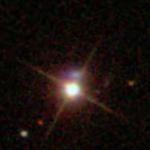
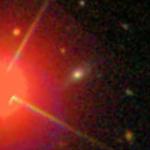
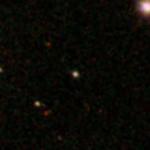
AGS000004v (0.4,0.6,0.8,3.8,0.9), AGS00000s1 (-8.3,2.9,2.6,-11,2.0), AGS00001z3 (7.8,4.5,2.9,2.2,1.6)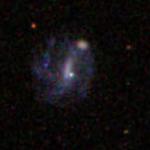
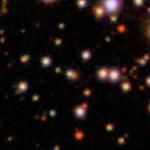
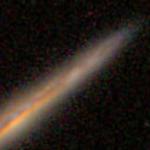
AGS00001ka (2.0,3.6,2.1,1.9,-1.0), AGS00002ak (5.5,3.4,2.3,1.8,1.4), AGS00000iz (-0.0,1.0,1.1,0.6,-0.0),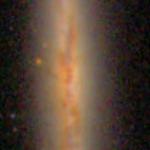
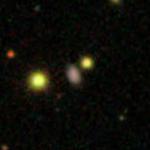
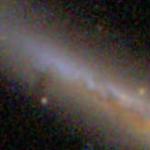
AGS00001b2 (-2.1,1.1,1.0,0.9,0.9), AGS00000f1 (-0.9,1.2,1.2,1.0,1.0), AGS00001b0 (-0.8,1.0,0.8,0.6,0.1)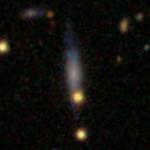
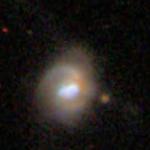
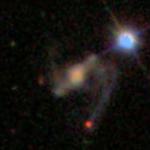
AGS00000dt (1.7,1.4,1.3,2.3,1.1), AGS0000272 (1.0,0.7,0.6,0.7,1.9), AGS000021c (5.6,3.6,3.1,2.2,3.4)All the above have already been noted as one kind of outlier or another, in some cases several times, independently.
Of course, not every 'v3 vs v2 magnitude outlier' has been noted before; nor have I checked to see if every previously-noted outlier is also a 'v3 vs v2 magnitude outlier'. Here are three 'v3 vs v2 magnitude outliers', not previously noted:
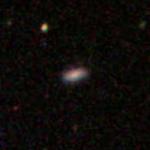
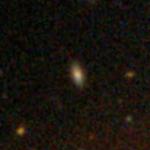
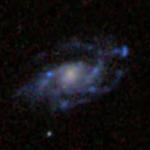
AGS000008o (-3.3,1.4,1.3,1.1,1.1), AGS000029m (-2.9,1.1,1.0,0.9,0.9), AGS00001fb (1.0,0.8,0.6,0.5,0.0)Posted
-
 by
JeanTate
by
JeanTate
I've now finished checking the morphology classification 'clumps', for differences between the v2 and v3 catalogs (both QS and QC).
There are, as expected, lots of objects, in both catalogs, with a classification in v3 - one of 'No', '1', or 'More than 1' - but none in v2 (for the same object). Also, for the classifications to be the same in both v2 and v3.
Differences? Just one that I could find: the QS object AGS00001k4, which has '1 clump' in the v2 catalog, and 'No' on the v3 one. This is one - of six - QS-QC duplicates which have different morphological classifications in v2 and v3; for AGS00001k4 this is just one of several morphology parameters whose values differ.
And that completes my checking of the v2 vs v3 morphological differences.
Posted
-
 by
JeanTate
by
JeanTate
Outlier v2 vs v3 (u, g, r, i, z) magnitudes in the QC catalog also contain some outliers, and some objects not (yet) noted as such. For example:
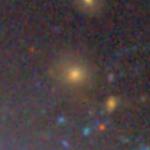
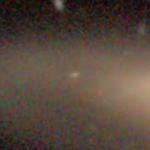
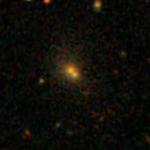
AGS00003ky (-0.8,1.1,1.0,1.0,0.9)1, AGS00002qp (-12,0.8,0.8,0.4,0.0), AGS00004ac (4.3,1.9,1.3,1.2,1.1)1 an 'overlap' outlier I discovered while checking these v2 vs v3 magnitude outliers
Posted
-
 by
trouille
scientist, moderator, admin
in response to JeanTate's comment.
by
trouille
scientist, moderator, admin
in response to JeanTate's comment.
Is there an easy way to know what AGS00003ky is in ObjID? I know if you click on the value it takes you to a collection page and then you can click on Galaxy Zoo Examine which brings you to a page with SDSS ObjectId listed. But is there a more direct way that you know of?
Or, another way to ask the question is -- how do you go from the QC catalog to getting these thumbnails?
I'm wondering because I would love to know what's the most helpful way to share which sources are the 778 Quench and Control sources in the restricted sample discussed in http://quenchtalk.galaxyzoo.org/#/boards/BGS0000008/discussions/DGS0000223.
Thanks!
Posted
-
 by
JeanTate
in response to trouille's comment.
by
JeanTate
in response to trouille's comment.
Hmm, well here's what I ended up doing (quite a few false starts and blind alleys that are now, thankfully, history):
- from one of the early versions of the catalogs, create a spreadsheet with uid (AGS000...), RA, and Dec columns1
- having selected whatever objects I want to display as images, I created text that will display those images, from DR10, when pasted into a Talk post.
The 'creating text' has two steps: write 'spreadsheet code' (a formula), then copy/paste (select, copy, paste ... very few keystrokes!). For example, in the Open Office spreadsheet I use, the code looks something like this:
CONCATENATE("![";A2;"]";"(http://skyservice.pha.jhu.edu/DR10/ImgCutout/getjpeg.aspx?ra=";B2; "&dec=";C2;"&scale=0.2&width=170&height=170&opt=G)")where A2 is the uid, and (B2, C2) are the (RA, Dec)2.
Formatting to display many images - more than ~10 say - gets a bit trickier; you need to work out where to add - in the text string - the formatting characters for line (but not para!) breaks.
It's also fairly easy to extend this to 'code' which produces text strings which are, for example, bullet lists of IDs, redshifts, etc.
1 for QS I actually used a file I obtained from the group mlpeck created in CasJobs, that has (RA, Dec) to more significant figures
2 actually, most parts of the text string are cell references, so I can vary things like scale and image size easily
Posted